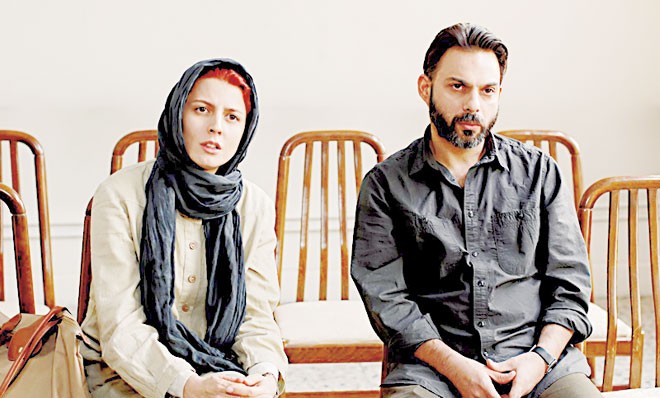
A look back at some old and new classics to spend the Eid holidays with...

A Separation (Jodaeiye Nader az Simin) (2011)
Dir: Asghar Farhadi
Starring: Peyman Moadi, Leila Hatami, Sareh Bayat, Sarina Farhadi
Irani writer/director Asghar Farhadi’s winner of the best foreign feature film Oscar for 2011 begins as a tale of marital strife but quickly morphs into both a mystery as well as an exploration of class, status, gender and religion in modern day Tehran. It is also a (Rashomon-esque but not quite) comment on the ephemeral nature of truth and a reminder of the fact that this world isn’t black or white. Rather we all spend our lives in various and fluctuating shades of grey and the main victims of the vicissitudes of events and the clash of wills and egos are often the weakest and most vulnerable members of society like children or the elderly. The final scene of the movie is about as heart-rending as it gets.
Delicately written, intelligently and sensitively acted by the entire cast (Farhadi’s own daughter plays the only child of the feuding couple Nader and Simin) and tightly directed, A Separation is a must-see and a movie that will stay with you for a long, long time. If you’ve never seen this one before do yourself a favour and watch this right now. In Farsi with English sub-titles.
Cut to chase: One of the best movies you’ll ever see.
Bombai Ka Babu (1960)
Dir: Raj Khosla
Starring: Dev Anand, Sushmita Sen, Achala Sachdev, Nasir Hussain, Jeevan
I’m not the greatest Dev Anand fan but he did make some really interesting movies (especially in the ’60s) like Hum Dono, Guide, Teen Deviyan and Jewel Thief which were hardly run of the mill and where he was hardly the typical romantic hero. One of the most intriguing of these was Bombai Ka Babu. Well-known Urdu novelist and short-story writer Rajinder Singh Bedi wrote the film (borrowing liberally from O. Henry’s short story "The Double-dyed Deceiver") and the suppressed incestuous undercurrent that runs through the movie really made the movie unique for its time (and it’s a bit daring even for this day and age).
Small-time crook Babu (Dev Anand, looking good and not yet a prisoner to the affected mannerisms that would take over his screen persona in later years), on the run from the Bombay police, presents himself as a long-lost son of a small landowning family in a Punjab village. He’s an impostor intent on getting his hands on the family’s money but what he hadn’t counted on was falling for his "sister", Maya (the lovely Suchitra Sen) and even she’s a bit confused by the arrival of this handsome stranger who just happens to be her brother. Shot beautifully in black and white, well-directed and with some glorious music by Sachin Dev Burman (the stand-out songs are the Rafi-Asha duet ‘Deewana Mastana Hua Dil’, Rafi’s immortally soulful ‘Saathi Na Koi Manzil’, and Mukesh’s poignant ‘Chal Ri Sajni Ab Kya Sochay’), this is a must see.
Cut to chase: Different but fascinating. A ’60s classic.
Gilda (1946)
Dir: Charles Vidor
Starring: Rita Hayworth, Glen Ford, George Macready, Joseph Calleia
Cut to chase: Rita Hayworth is the very personification of a femme fatale in this film noir classic.
Kmumtaz1@hotmail.com; khusromumtaz.wordpress.com